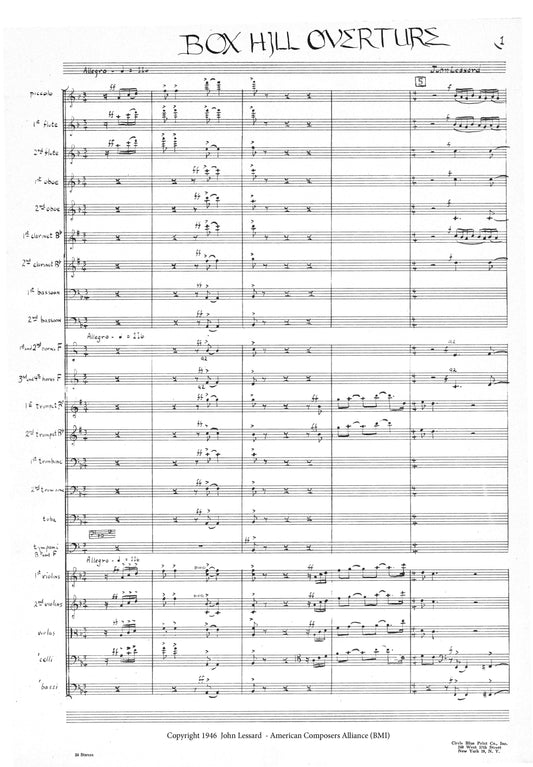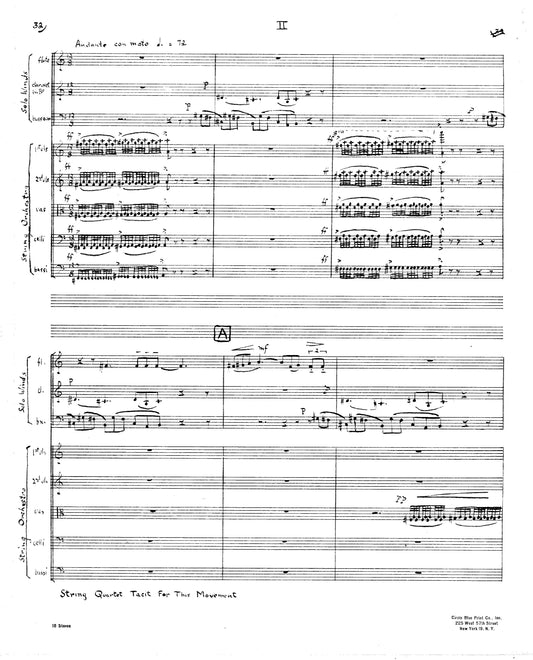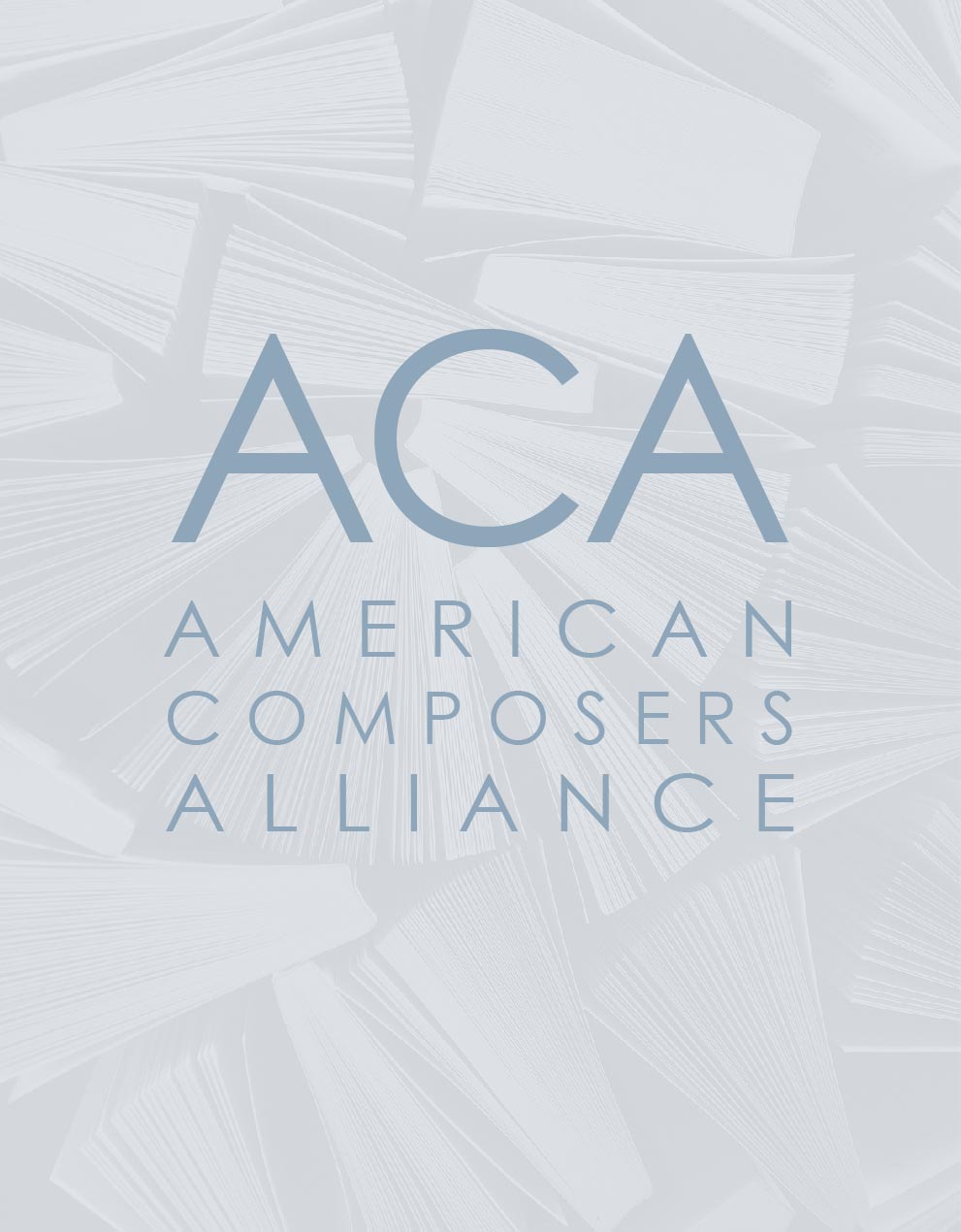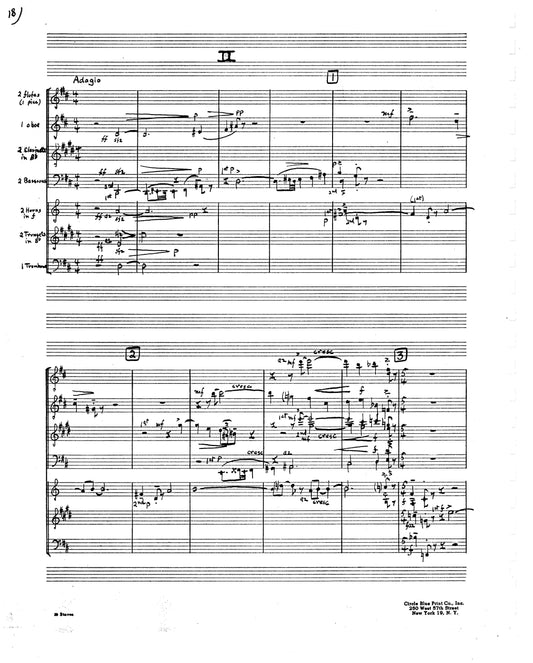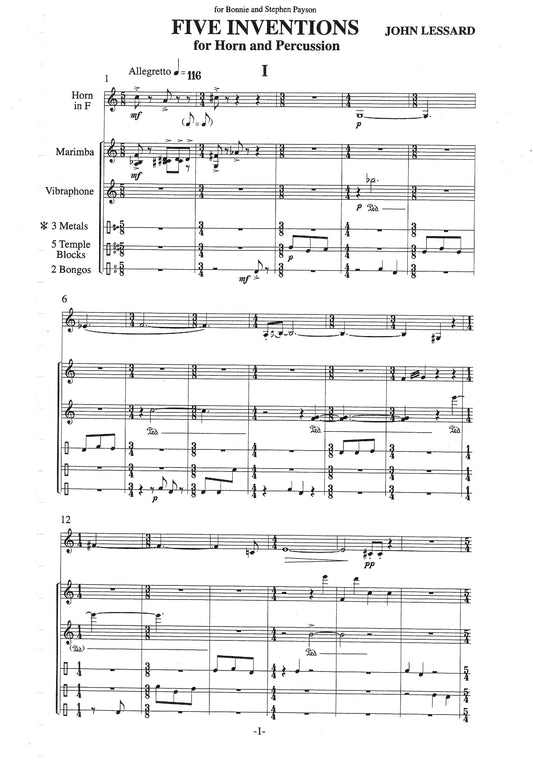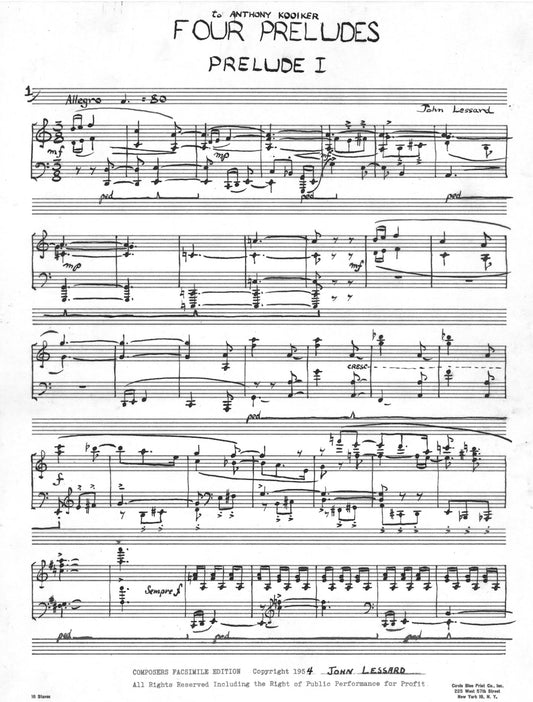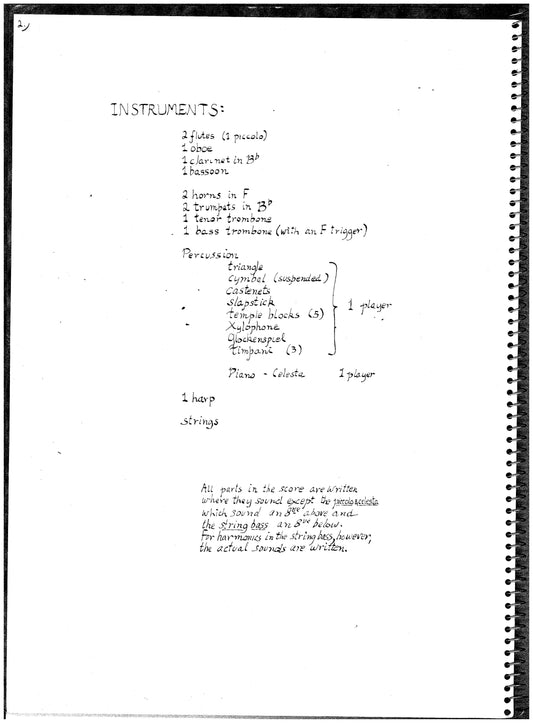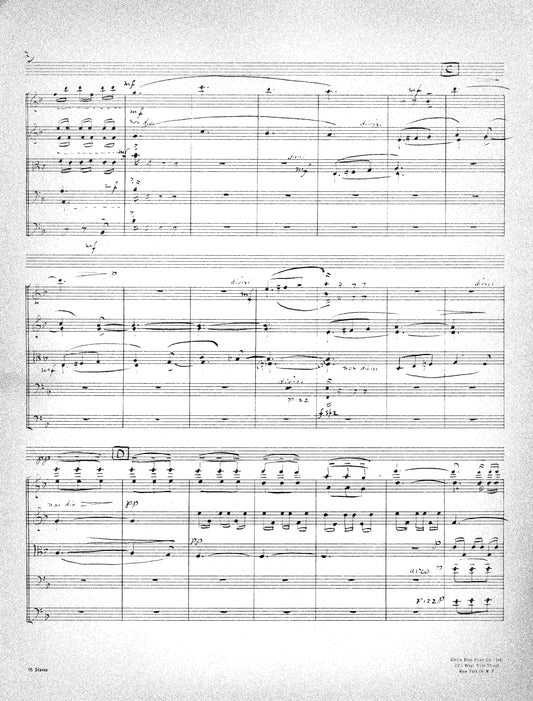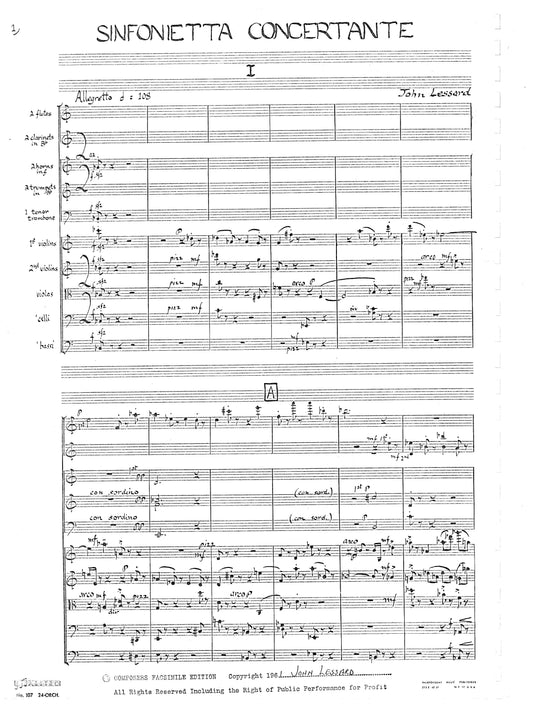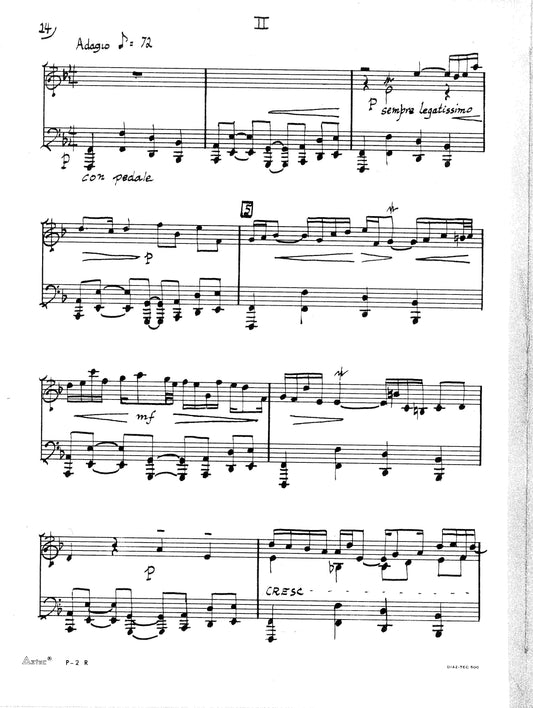Collection: Lessard, John
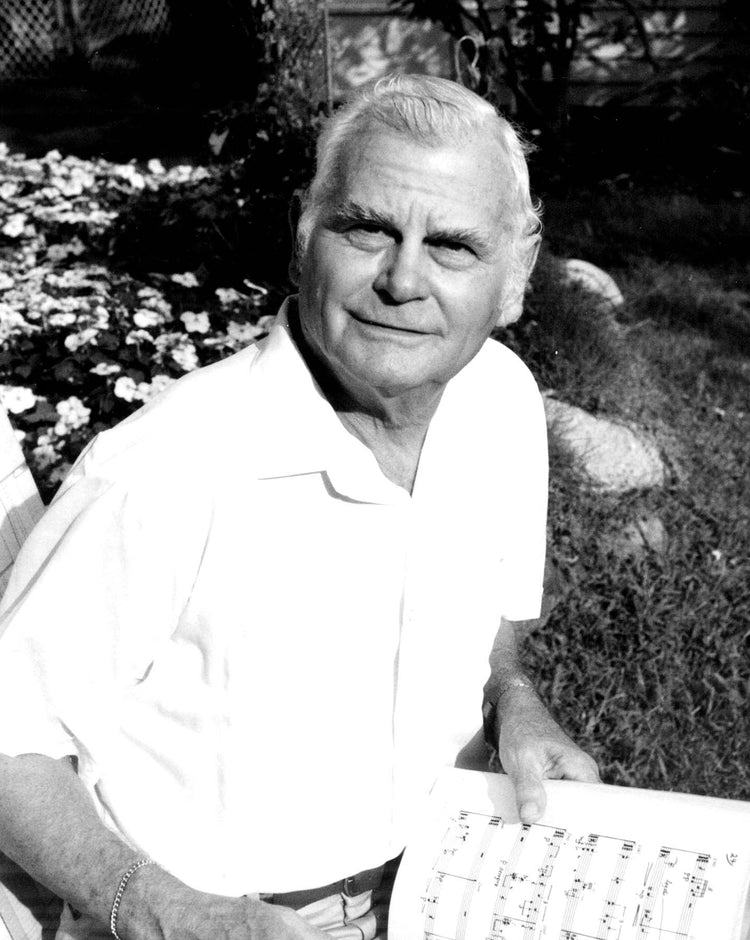
John Ayres Lessard (1920-2003) was an American composer and educator whose oeuvre concentrates on music for voice, piano, and large and small chamber ensembles for diverse combinations of instruments. Born July 3, 1920 in San Francisco, he showed an aptitude for music at a young age. His early music education centered on the piano, trumpet, and music theory, and included occasional composition lessons with Henry Cowell. From 1937-1940, he studied at the École Normale de Musique de Paris where his principal teachers were Nadia Boulanger, Alfred Cortot, and Georges Dandelot. Escaping from the German invasion of France, he returned to the United States and resumed composition studies with Nadia Boulanger at the Longy School of Music in Cambridge, Massachusetts (1940-41) prior to joining the United States Army in 1941. On being discharged in 1945, he settled on Long Island where he taught privately and continued to compose, receiving two Guggenheim Fellowships (1946, 1953). He joined the American Composers Alliance in the mid-1940’s and took an active part in the organization for many decades. In 1962, he was appointed Professor of Music at the State University of New York at Stony Brook where he worked closely with the Stony Brook Contemporary Chamber Players and taught music theory and composition until his retirement in 1990.
John (Jack) Lessard’s early works are in a neo-classic idiom, reflective of his studies with Boulanger and his esteem for the music of Stravinsky. In the mid 1960’s, he began exploring serial procedures and gravitated to a generally pan-chromatic tonal palette in which particular tones serve as focal points and experimental harmonies and piquant tone clusters abound. His music tends to be rhythmically fluid, and to create expressive tension between relatively calm and fairly agitated passages or motives. In keeping with his admiration for the music of J. S. Bach, textures are often contrapuntal and challenge listeners to follow multiple lines unfolding simultaneously in different registers. Collaborations with distinguished performers on the Stony Brook music faculty and with talented Stony Brook students led to series of challenging works for guitar, percussion, trumpet, piano, and mixed ensembles. Among his noteworthy compositions are settings of Shakespeare and Herrick poems (1939-1951), a Sinfonietta Concertante (1961), Duet for Piano and Percussion (1984), five Bagatelles for piano (1986-1999), The Pond in a Bowl (poetry of Chinese poet Han Yu (768-824) for soprano with percussion and piano accompaniment, 1985), a Quintet for flute, clarinet, violin, cello and piano (1993), Music for Solo Harp and Chamber Ensemble (2000), and an elegiac Pavane for Two Marimbas (2002).
-
-
-
John Lessard
CONCERTO FOR FLUTE CLARINET BASSOON and STRINGS aka Concerto for Winds and Strings
fl, cl, bsn, 4 solo str parts (vln1,vln2,vla,vcl) & string orch parts:2-1-1-1
$81.50 -
-
-
-
-
-
-
-
-
-


